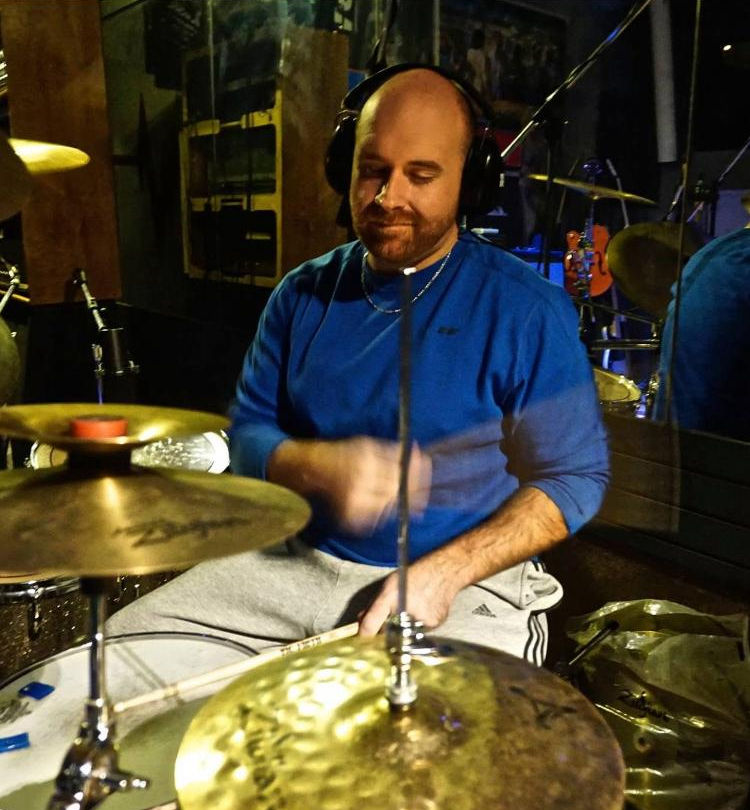Building the Wall of Sound: Behind the Mix of “Let It Go”
- Michael-Jon

- May 7
- 3 min read
Updated: May 21
Thick, Loud, and Built to Last
Right now, our ears are shot and our hearts are full. We’re buried in the mixdown of Record Two — Lovestruck — for Spectra Music Group, and there’s a track that’s taken on a life of its own.
Let It Go is what you get when you combine raw soul with massive sonic weight. We’re talking thickness. Layers. Sounds stacked on top of sounds until the walls feel like they’re breathing. This isn’t just a mix—it’s a slow burn built out of heartache, analog heat, and hours lost in the studio.
The Hammond Church Organ That Started It All
This song didn’t begin in a DAW or as a voice memo. It started with the hum of an original Hammond Church Organ. We rolled it into the studio, plugged it straight in, and let it speak. No samples. No simulations. Just that vintage warmth pressing its fingerprints into everything it touched.
You can feel it in the first few bars of Let It Go. That slow swell, that heavy tone—it’s the kind of sound that fills the room before the first lyric even drops. That organ laid the foundation for everything that followed.
Thickening the Mix, One Layer at a Time
Once the bones were down, it became about building mass without losing clarity. That’s where the layering started. Guitars were doubled and detuned. Vocals were stacked, sometimes whispered under the lead for tension.
We added rhythmic keys that don’t scream for attention but glue the entire thing together. Everything has its place, but it’s all designed to feel big.
This track isn’t afraid to take up space. It’s not polite background noise. It wants to sit in your chest.
Chris Lawrie (Cygnill) Takes It All the Way
Cygnill, known to civilians as Chris Lawrie, is the mad scientist helping us shape this chaos. He doesn’t just ride faders—he manipulates energy. One minute he’s stripping things back, the next he’s adding subtle distortion to a vocal take to make it catch a little more air.
He’s thickening the low-end, gluing harmonics, saturating layers in just the right spots. What’s more, he’s treating Let It Go like it’s the spine of the whole record. And that feels about right.
Why Thickness Matters
In a world where thin mixes live on TikTok clips, we’re chasing something bigger. Let It Go is all about emotional weight, and the mix needs to reflect that. The goal isn’t just clarity—it’s depth. It’s texture. It’s making you feel something even when the lyrics fall silent.
Each time we revisit the mix, it gets heavier in the right ways. There’s a density to it now that feels intentional. It’s not muddy. It’s not crowded. It’s just… thick, the way your favorite records from the ’70s and ’90s felt.
This Ain’t Record One
Lovestruck isn’t a redo of what we did last time—it’s a level up. Let It Go stands as proof that we’re not just writing songs anymore. We’re building experiences. The kind you can sit inside of. The kind you can scream along to when no one’s looking.
We’re not chasing radio polish. We’re chasing gut punches. And if that means stacking an extra seven vocal layers to get there? Bring it on.
One Track, Infinite Vibes
The crazy thing is this: every time we print a new version of Let It Go, it sounds different. Same chords. Same lyrics. But new weight. New emotion. That’s what happens when you layer carefully—each element brings a slightly different feel to the surface.
Sometimes it’s urgent. Sometimes it’s sad. Sometimes it sounds like freedom. That’s the magic of mixing with intent.
Final Thoughts Before the Fadeout
We’re not done yet. But we’re damn close. And this song? It’s quickly becoming the one we can’t stop playing in the car at 2 a.m. with the windows down.
Let It Go might’ve started with a Hammond Organ, but now it’s a full-on storm. A wall of sound built brick by brick in a dimly lit studio, late into the night, by people who care more about how it feels than how it charts.
And trust us—Lovestruck is going to hit hard.







Comments